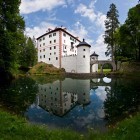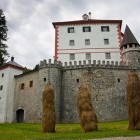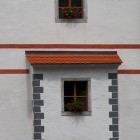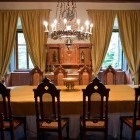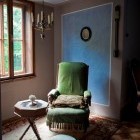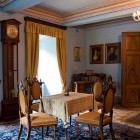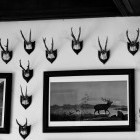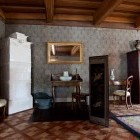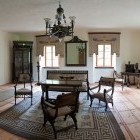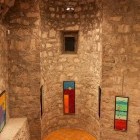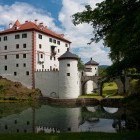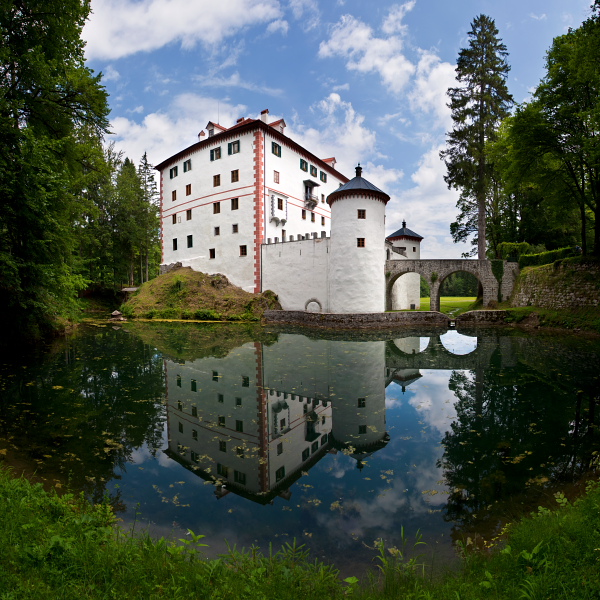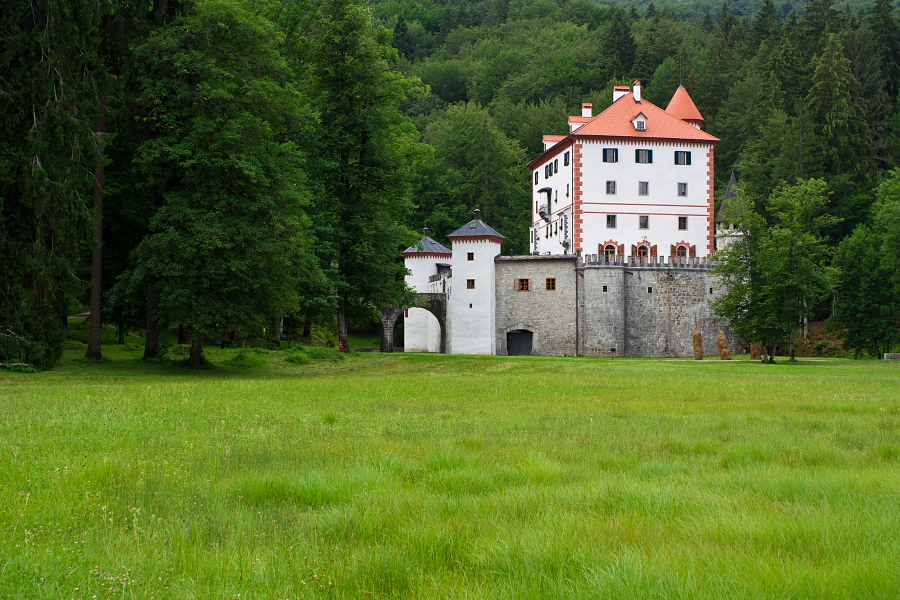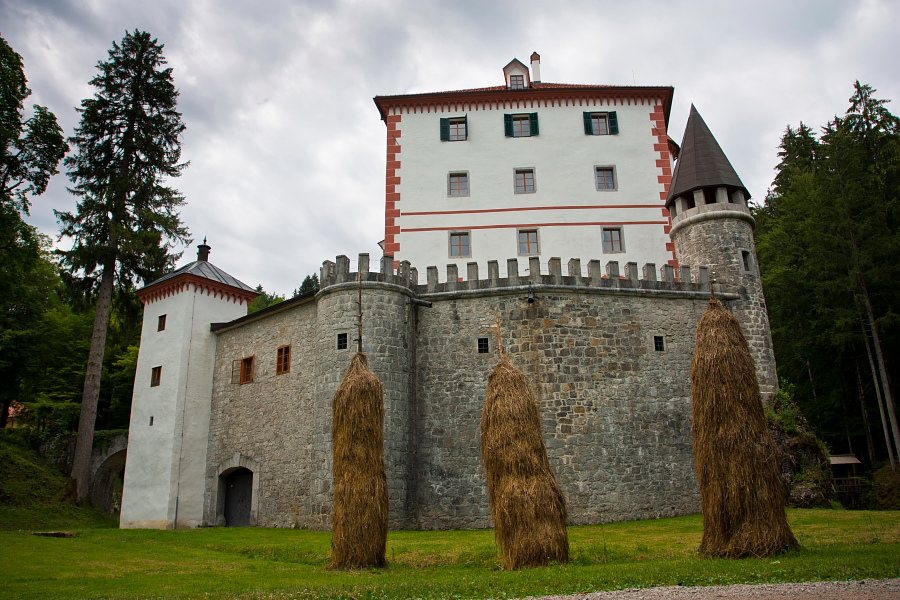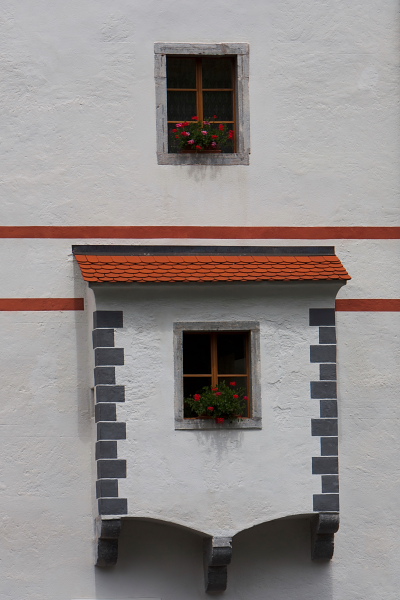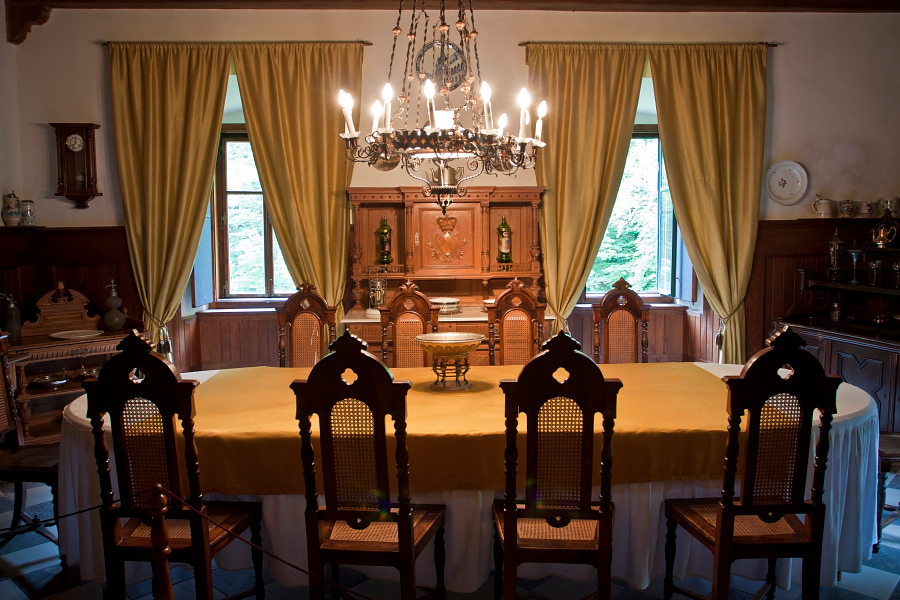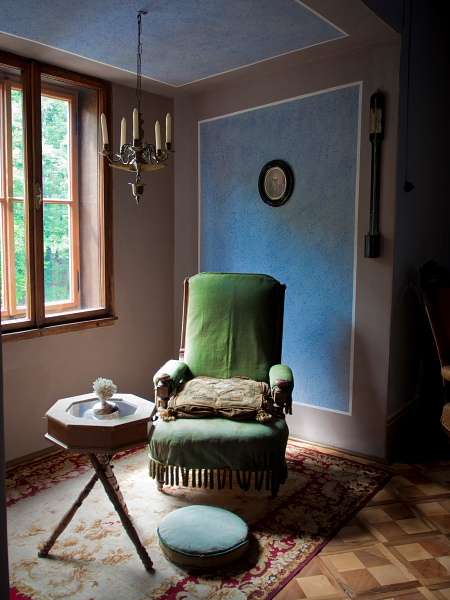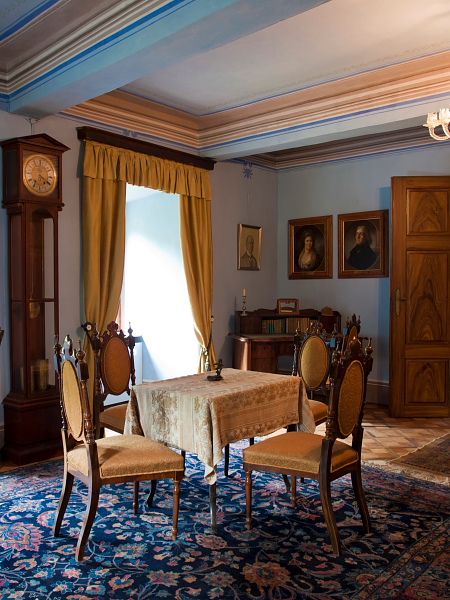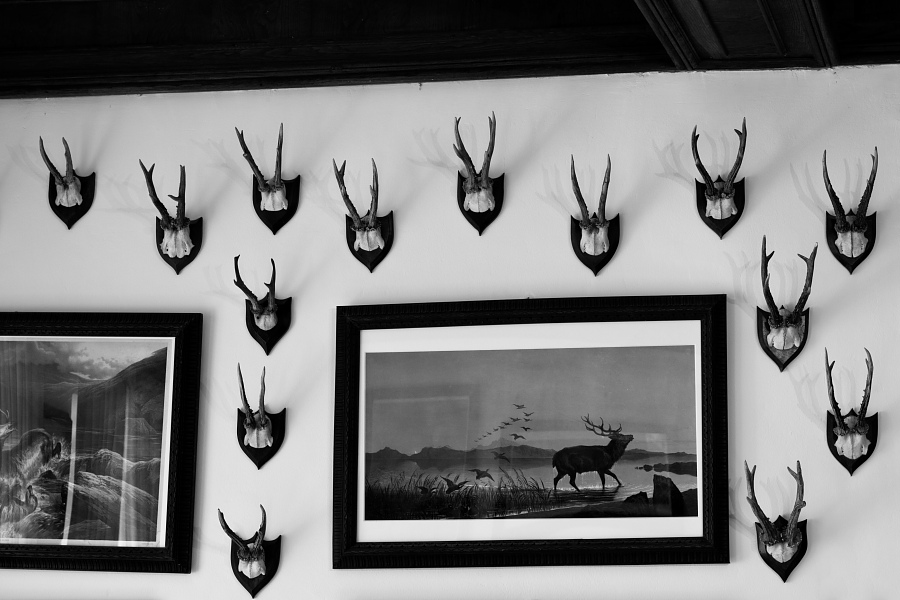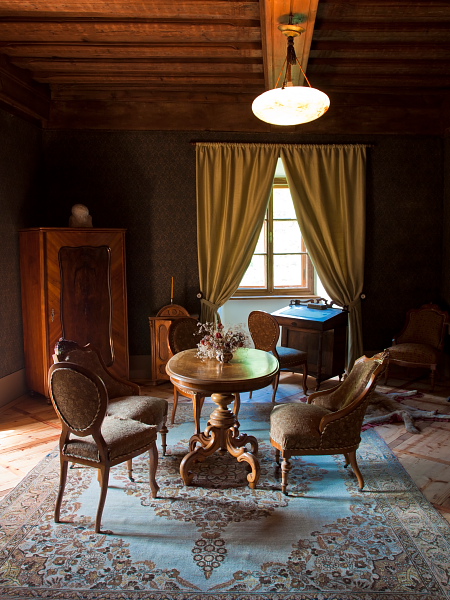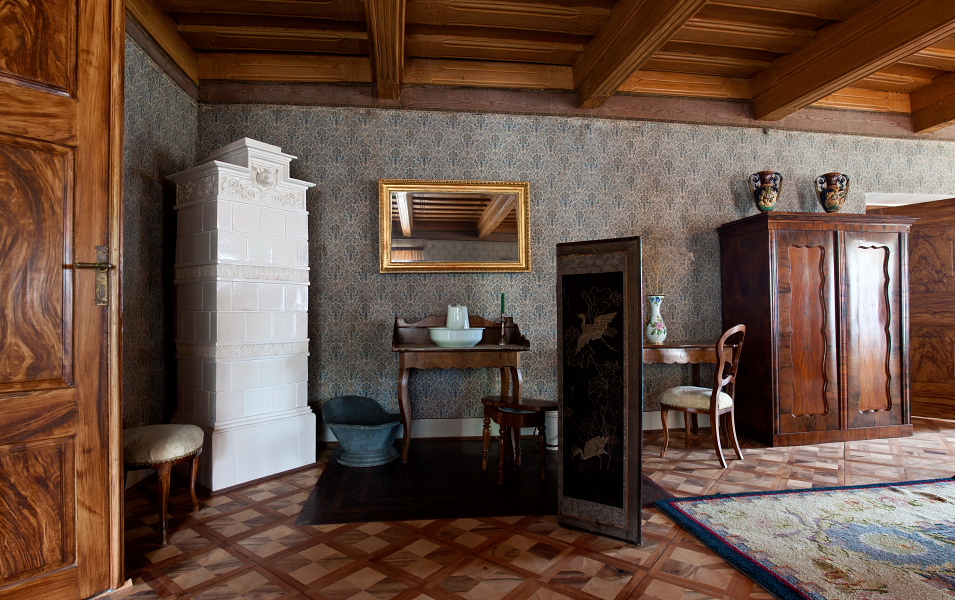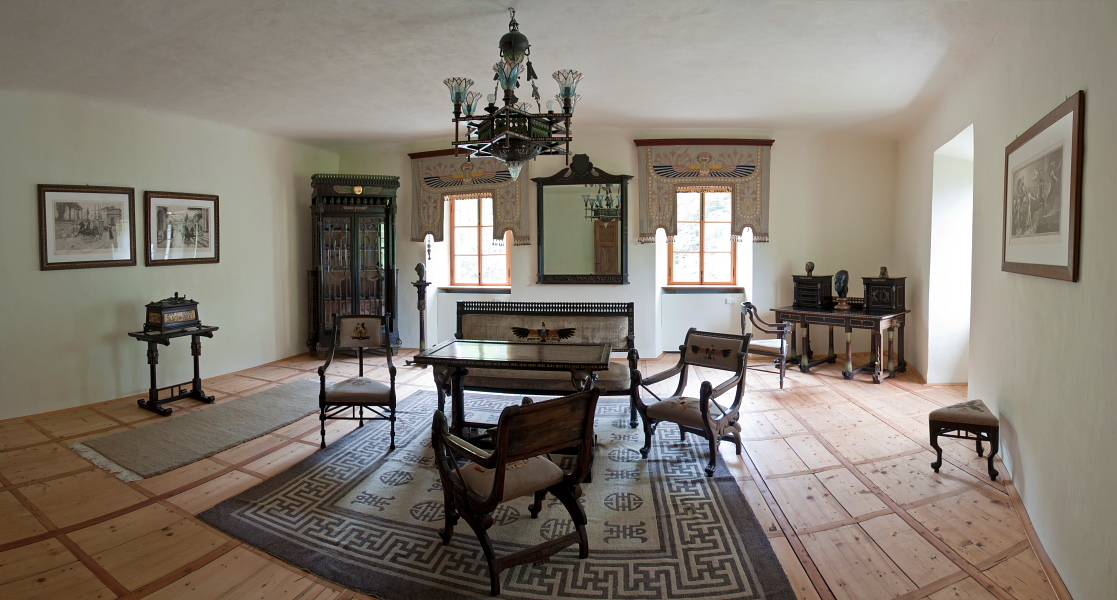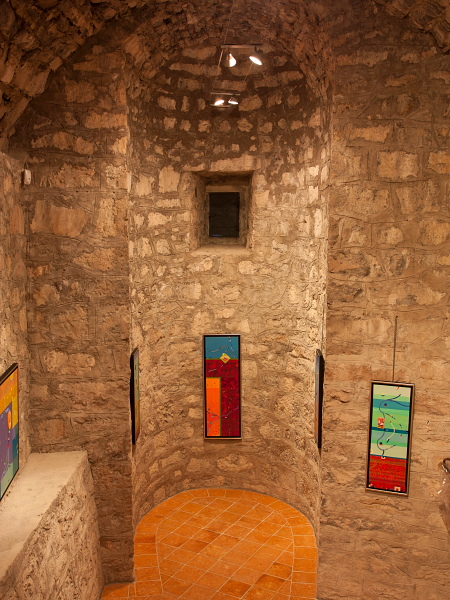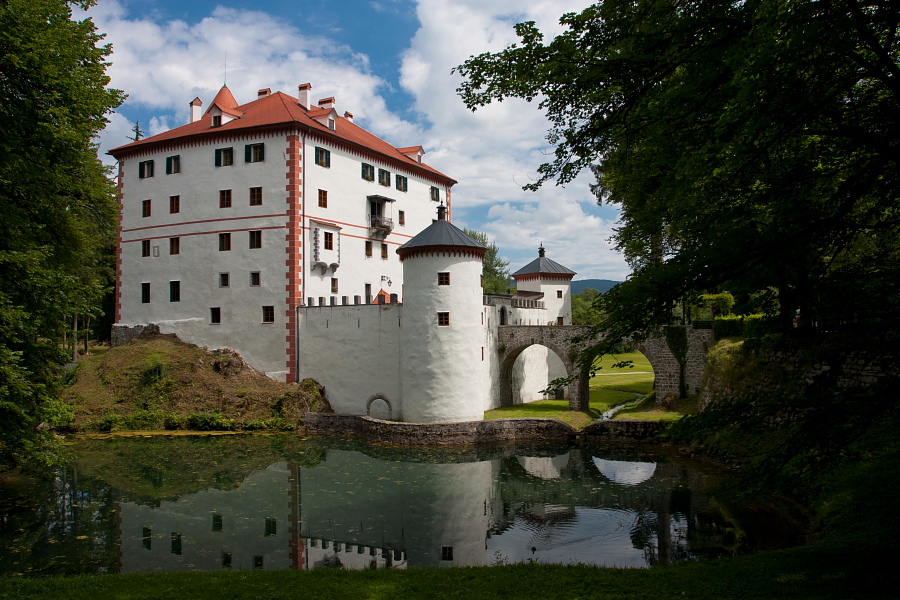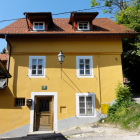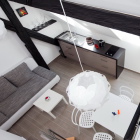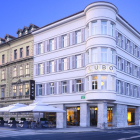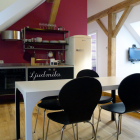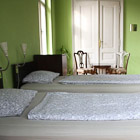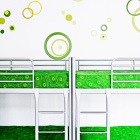How to get there:
Leave the 'Ljubljana - Koper' motorway on exit Unec. Drive through towns of Rakek and Cerknica and stay on the main road onward to the village Bloška Polica. Here you turn right, continue through Stari Trg Pri Ložu to the village Pudob. A signpost for Snežnik castle directs us to the right here and we come to the castle shortly (from Ljubljana: 65 km, 1 hour drive).
Description:
Castle stands at an essential strategic point on the edge of Loška valley. In the beginning it was only an outpost, that provided travelers and merchants who were making their way through extensive forests towards Rijeka with shelter. The outpost gradually grew into a castle that belonged to numerous aristocratic families between 13th and 20th century.
Lastly (from 1853 to the end of 2nd World War) it was owned by a German family of Saxon princes Schönburg-Waldenburg, who used the castle as a summer and hunting residence. The castle got its present-day image in their time, it was properly maintained and run together with its extensive property. Princes fostered the development of forestry and wood industry, controlled the hunting and preserved the number of animals in the woods. The property was giving employment and income to numerous locals, who highly appreciated the princes.
During the 2nd World War the castle was a target for both Germans and partisans and the last warden of the castle, sir Leon Schauta, played a notable role at that time. It is said that he was an exceptional 'politician' and managed to persuade both sides not to ruin the castle. When Germans aimed their cannons at the castle, he knelt before them and begged that they spare the castle, since it was owned by a German family after all. Later the partisans had the intention to burn down the castle, but he skillfully convinced them with: “After the war everything will be yours anyway...” Thanks to Schauta the castle remained intact and it is the only one in Slovenia with fully preserved original interior equipment. Only Jovanka Broz (wife of former Yugoslavian president Tito) supposedly 'relocated' a part of the interior to her residence in Brdo near Kranj after the war.
The castle is under the management of National Museum of Slovenia nowadays and it is possible to visit it. We can take a look at the halls, that are decorated with authentic furniture and portraits of aristocratic families. Considering that the estate is enclosed by extensive woods, several hunting trophies, which are exhibited round the castle, were collected with time. There is a hall intended for occasional art exhibitions and there is also a wedding room on the ground floor. The castle is surrounded by a pond, mighty avenues, nice meadows and endless forest areas. It shows a different and interesting 'face' in every time of the year. Definitely worth a visit!
Gallery
Where to sleep
Basic information
Location
Loška dolina
Type
grad
Entrance fee
da
Altitude
590 m
